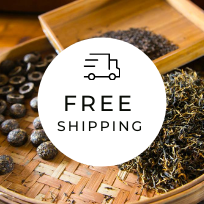- HOME >
- Akira Hojo | HOJO Online Speciality Tea Shop- Part 17
Akira Hojo | HOJO Online Speciality Tea Shop- Part 17
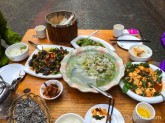
- [2015.03.24]
- Getting inspired by the rich food culture in Yunnan
While traveling in Yunnan province for hunting pu-erh tea, I often drop by the local restaurant. To be frank, I am very fascinated with local cuisine. It is one of my favorite times throughout my trip. The deeper we go, the thicker the taste of food it becomes Based on my experience, the taste of …

- [2015.03.22]
- Spring Tea Hunting in Yunnan 2015 Just Began
I have been in Yunnan since 20th March 2015 to hunt for new crop of raw pu-erh tea. Quality tea is first come first served In Lincang region of Yunnan, the very first crop of pu-erh tea is available around 20th March. Usually, tea is harvested starting from the gardens at lower altitude where generally …
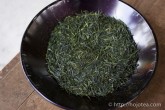
- [2015.02.24]
- Why do you brew green tea at lower temperature?
Talking about brewing Japanese green tea, many people generally has accepted that it should be brewed at lower temperature as it was always emphasized in most of the internet media and books regarding tea topics, many resources explain that sencha has to be brewed at 70-80 degree C. Nevertheless, I personally prefer to use boiling …

- [2015.02.06]
- The important point for selecting water filter
Water is the most important element in brewing a nice cup of tea. I usually collect water from the in-coming tap after removing chlorine. I would like to share some experiences about how to treat water before using it in brewing tea. Chlorine affects our health and tea flavour as well The tap water usually …
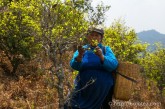
- [2015.01.28]
- The reason to hunt for the naturally farmed tea
In 2014 I went to Yunnan, China twice and stay there for about a month plus. For now, most of teas have already arrived and I am enjoying drinking it every day. The main purpose that I keep going to the Yunnan tea production site is to look for tea grown with the natural farming …

Many of us tend to associate Chinese tea with pu-erh tea and oolong tea. However, more than 70% of tea produced in China is green tea (approximately 1138,000 tons). Literally, we can say that Chinese tea = green tea as a whole. If you have ever travelled to China, you might discover that most of …

- [2015.01.17]
- Rich body and aftertaste, Uji Sencha Fukamushi
We quietly released Uji Sencha Fukamushi last year. Uji Sencha Fukamushi is not an ordinary Fukamushi sencha. Collaboration between Sencha and Fukamushi Sencha In Japanese, the “fukamushi” means deeply steamed. Fukamushi sencha is produced following the standard process in making a sencha, but a longer steaming process is conducted compared to ordinary sencha. The sencha …
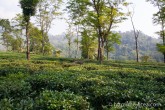
- [2015.01.15]
- Easy way to understand the scientific name of tea
Tea is made of the plant called Camellia sinensis. But as you know, it is further classified into various types such as Assam, Yabukita, Tie Guan Yin, Shui Xian or China bush. Are these types considered as species or cultivar? I would like to explain the rules that classify the type of tea variety. There …
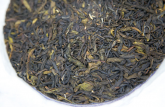
- [2014.12.29]
- The wild tea collected near the China-Myanmar border
The Myanmar border wild pu-erh tea is a raw pu-erh tea. It is made of the wild tea variety grown near the China-Myanmar border. The wild tea means the tea tree is growing in the mountain just like wild mushroom or wild plant in the natural environment and it’s not cultivated by human. If you …
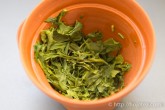
Asamiya sencha (朝宮煎茶) is from Shigaraki, Koga city in Shiga prefecture. Asamiya is the district that belongs to Shigaraki town.The taste of Asamiya sencha is very rich, full body and it gives lingering sweetness on our palate. In fact, full-body character is extremely rare for Japanese green tea. Asamiya is gifted place with special clay …
PAGE 17 OF 27
- Yunnan Chun Jian Green Tea from High Mountain Gardens
- Yunnan Chun Jian Green Tea is now available.This tea is made from naturally grown leaves harvested from high mountain gardens at 2100m above sea level. It has a rich, long-lasting lingering aftertaste, comparable to raw Pu-erh tea. Yunnan as a Distinctive Tea Growing Region Over the past 20 years, we have explored a wide range …
- Limited Loose Leaf Release of 2025 Da Xue Shan Wild Raw Pu-erh Tea
- We have released the 2025 loose-leaf version of Da Xue Shan Wild Raw Pu-erh Tea.This tea comes from wild tea trees that grow naturally in the high mountains of Yunnan Province, at elevations above 2000 meters. This year, we were only able to secure a small quantity for retail, and the current release is available …
Popular ArticleAkira Hojo | HOJO Online Speciality Tea Shop- Part 17
 Introducing 3 High Grown Darjeeling First Flush Teas Produced Using Sustainable Methods
Introducing 3 High Grown Darjeeling First Flush Teas Produced Using Sustainable Methods- We have released three types of Darjeeling First Flus...
 New Release of 2 Types of Darjeeling 1st Flush
New Release of 2 Types of Darjeeling 1st Flush- We have released two types of Darjeeling 1st Flush Te...
 The Impact of Heat Sources on Tea Flavor
The Impact of Heat Sources on Tea Flavor- It is widely recognized that the material of a ket...
 Do You Know What Exactly is Jasmine Tea?
Do You Know What Exactly is Jasmine Tea?- We went to Heng Xian county located in Guangxi of C...
 2024 Overview: Our Yunnan White Tea Quality, Process, and Weather Insights
2024 Overview: Our Yunnan White Tea Quality, Process, and Weather Insights- One of the teas we've been focusing on in Yunnan P...
 Akitsu Mumyoi Clay from the Great Sado Mountain Range
Akitsu Mumyoi Clay from the Great Sado Mountain Range- Red clay from A largest Gold Mine in Japan Sado Isla...
 What Everybody Ought to Know About Pu-erh Tea
What Everybody Ought to Know About Pu-erh Tea- What are the criteria that define the quality of pu...
 Yunnan Chun Jian Green Tea from High Mountain Gardens
Yunnan Chun Jian Green Tea from High Mountain Gardens- Yunnan Chun Jian Green Tea is now available.This t...
 Visiting tea garden in Fuding city of Fujian province in China
Visiting tea garden in Fuding city of Fujian province in China- I am now in Fuding city of Fujian provinc...
 New Release of High Mountain White Tea
New Release of High Mountain White Tea- We are pleased to introduce our High Mountain Whit...
Shop Info

Address:Lot No. T-215, 3rd Floor, The Gardens Mall, Mid Valley City, Lingkaran Syed Putra, 59200 Kuala Lumpur
Tel: +603-2287-4537
Business Hour: 10am to 10pm
Category
- New Arrival at HOJO Online Shop
- Featured Articles
- Newsletter
- Types of Tea
- Origin of Tea
- Teapot and Tea Equipment
- Tea Column
- How to enjoy tea
- Tea Processing
- How to choose quality tea
- Tea constituents and functional effect
- Safety of Tea
- Foods
- Tea Business Operation
- Hobby and Outdoor Activity
- Ranking of Tea
- Video
- FAQ
- Media Release
Profile

- AKIRA HOJO
- I invite you to experience my tea selections.I was born in Nagano, Japan. In university, I studied agricultural chemistry, and I have the master degree in food science. I worked in Japanese food industry for 10 years. I involved in R&D, QC and QA. As a factory manager, I implemented ISO9000 series and managed the factory.
- The Art of Tea Magazine
- We posted the article on “The Art of Tea Magazine No.9, the magazine is published in Taiwan. We featured some scientific view about the tetsubin
- New Straits Times
- The Malaysian National Newspaper, New Straits Times featured HOJO Tea on 17-Oct-2007.

